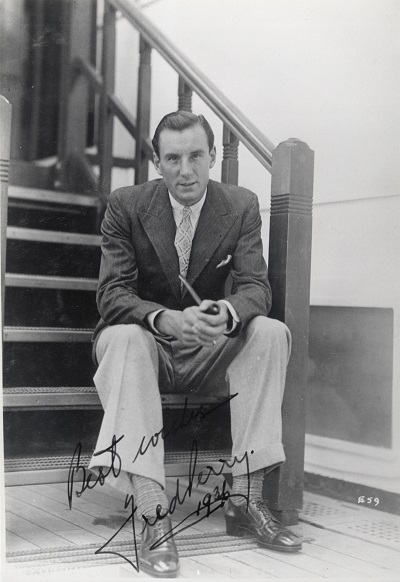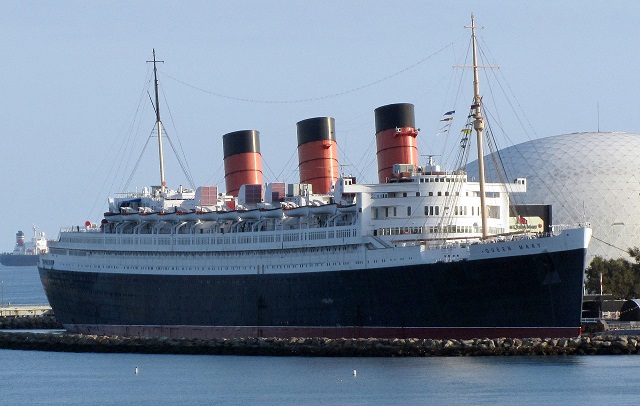Cunard Releases Historic Queen Mary Picture
Cunard is celebrating the 80th anniversary of RMS Queen Mary’s first voyage by publishing a previously unreleased picture of celebrated British championship tennis player Fred Perry on board the company’s flagship liner in 1936.

Queen Mary sailed primarily on the North Atlantic Ocean from 1936 to 1967. Built by John Brown & Company in Clydebank, Scotland, Queen Mary along with RMS Queen Elizabeth, were built as part of Cunard's planned two-ship weekly express service between Southampton, Cherbourg and New York City. The two ships were a British response to the superliners built by German and French companies in the late 1920s and early 1930s.
The liner featured two indoor swimming pools, beauty salons, libraries, and children's nurseries for all three classes, a music studio and lecture hall, telephone connectivity to anywhere in the world, outdoor paddle tennis courts and dog kennels. Queen Mary was the first ocean liner to have a Jewish prayer room – part of a policy to show that British shipping lines avoided the racism evident at that time in Nazi Germany.
World War II
In late August 1939, Queen Mary was on a return run from Florida to Southampton. The international situation led to her being escorted by the battlecruiser HMS Hood. She arrived safely, and set out again for New York on 1 September. By the time she arrived, the Second World War had started and she was ordered to remain in port.
In 1940, Queen Mary left New York for Sydney, Australia, where she, along with several other liners was converted into a troopship to carry Australian and New Zealand soldiers to the United Kingdom. The ship's hull, superstructure and funnels were painted navy grey. As a result of her new color, and in combination with her great speed, she became known as the "Grey Ghost."
To protect against magnetic mines, a degaussing coil was fitted around the outside of the hull. Inside, stateroom furniture and decoration were removed and replaced with bunks. Six miles of carpet, 220 cases of china, crystal and silver service, tapestries and paintings were removed and stored in warehouses for the duration of the war. The woodwork in the staterooms, the cabin-class dining room and other public areas was covered with leather.
Queen Mary and Queen Elizabeth were the largest and fastest troop ships involved in the war, often carrying as many as 15,000 men in a single voyage, and often traveling out of convoy and without escort. Their high speed made it difficult for U boats to catch them.
In 1942, Queen Mary accidentally sank one of her escort ships, slicing through the light cruiser HMS Curacoa off the Irish coast with a loss of 239 lives. Queen Mary was carrying thousands of Americans of the 29th Infantry Division to join the Allied forces in Europe. Due to the risk of U-boat attacks, Queen Mary was under orders not to stop under any circumstances and steamed onward with a fractured stem.
Some sources claim that hours later, the convoy's lead escort returned to rescue 99 survivors of Curacoa's crew of 338. This claim is contradicted by the liner's then Staff Captain (and later Cunard Commodore) Harry Grattidge, who records that Queen Mary's Captain immediately ordered the accompanying destroyers to look for survivors within moments of the Curacoa's sinking.
In December 1942, Queen Mary carried 16,082 American soldiers from New York to Great Britain, a standing record for the most passengers ever transported on one vessel. During this trip, while 700 miles (1,100 kilometers) from Scotland, she was hit broadside by a rogue wave that may have reached a height of 92 feet (28 meters). It was calculated later that the ship rolled 52 degrees, and would have capsized had she rolled another three degrees.
The incident inspired Paul Gallico to write his novel, The Poseidon Adventure (1969) and carry the incident to a fictional extreme. This was adapted as a 1972 film by the same name, in which the SS Poseidon is turned upside-down, and the trapped passengers try to escape.
During the war, Queen Mary carried British Prime Minister Winston Churchill across the Atlantic for meetings with fellow Allied forces officials on several occasions. He was listed on the passenger manifest as Colonel Warden. The ship was also used to return American troops from Europe after the war.
1,000 Crossings of the North Atlantic
By 1947, Queen Mary had been refitted for passenger service. She was retired from service in 1967. On September 27 of that year, she completed her 1,000th and last crossing of the North Atlantic.
Queen Mary is now permanently moored as a tourist attraction at Long Beach in the U.S.

The opinions expressed herein are the author's and not necessarily those of The Maritime Executive.
